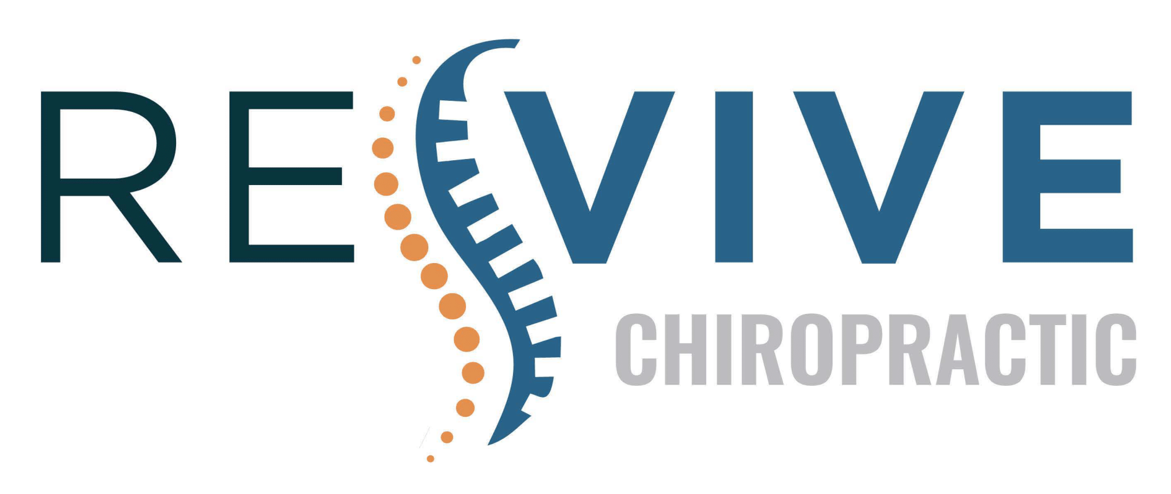If you're looking to enhance your mobility and flexibility, chiropractic care might be a key component in your journey. It focuses on spinal alignment and joint health, which can alleviate tension and improve your range of motion. Regular adjustments not only help with recovery but also promote overall well-being, enabling you to engage more fully in your daily activities. However, the real question is, how do these adjustments work, and what techniques can further optimize your results? Let's explore these aspects to uncover the potential benefits for your lifestyle.
Understanding Chiropractic Care
Chiropractic care focuses on diagnosing and treating musculoskeletal disorders, particularly those affecting the spine. You might be wondering how this healing approach works and what it can do for you. Chiropractors use hands-on spinal manipulation and other manual techniques to align your body's musculoskeletal structure. This realignment can help your body heal itself without the need for medication or surgery.
When you visit a chiropractor, they'll begin with a thorough assessment of your posture, movement, and any pain you might be experiencing. You'll likely answer questions about your medical history and lifestyle to help them understand your unique situation. Based on this information, they'll create a tailored treatment plan aimed at restoring your body's natural alignment.
Chiropractic adjustments usually involve a series of controlled, sudden movements applied to specific joints. This may feel strange at first, but many people report immediate relief from discomfort and increased mobility following their session. The goal is to reduce nerve irritability and improve your body's overall function.
In addition to adjustments, chiropractors often recommend exercises and lifestyle changes that can complement your treatment. They might suggest stretches to enhance flexibility or strengthen your core muscles, both essential for maintaining a healthy spine.
Benefits of Improved Mobility
Improved mobility can transform your daily activities, making tasks easier and more enjoyable.
You'll find it easier to engage in hobbies and routines without the fear of injury.
Plus, enhanced flexibility can greatly reduce your risk of getting hurt during physical activities.
Enhanced Daily Activities
Enhanced mobility can transform your daily routine, making even the simplest tasks feel effortless. You'll find that activities like bending down to tie your shoes or reaching for items on a high shelf become much easier.
With improved flexibility, you can navigate your home and workplace with greater ease, reducing the strain on your body. Chiropractic care helps align your spine, allowing for better range of motion and less tension. This means you can engage in chores without feeling fatigued or sore.
Whether you're lifting groceries, gardening, or participating in family activities, enhanced mobility can turn these moments into enjoyable experiences rather than exhausting ones. You'll also notice a boost in your overall energy levels.
With less discomfort and improved body mechanics, you'll be more inclined to stay active throughout the day. This newfound freedom in movement encourages you to pursue hobbies and interests you might've avoided due to stiffness or pain.
Ultimately, the benefits of improved mobility through chiropractic care extend beyond the physical. You'll likely feel more confident in your abilities, leading to a more fulfilling and active lifestyle. Embrace the ease that comes with enhanced mobility!
Reduced Injury Risk
One of the key benefits of better mobility is a significant reduction in your risk of injury. When your joints and muscles move freely, they're less likely to strain or tear, allowing you to engage in activities without fear of setbacks. Improved mobility enhances your body's ability to absorb shock and adapt to sudden movements, which is essential whether you're exercising, playing sports, or simply going about your daily tasks.
Chiropractic care plays a fundamental role in boosting your mobility by aligning your spine and ensuring your nervous system functions at its best. This alignment helps maintain proper biomechanics, which means your body moves more efficiently. As a result, you'll notice that your balance and coordination improve, further decreasing the likelihood of falls or other injuries.
Additionally, regular chiropractic adjustments can alleviate tension in tight muscles, which often contribute to poor movement patterns. By addressing these issues, you'll not only feel more comfortable but also be better equipped to handle physical demands without overexerting yourself.
Ultimately, investing in your mobility through chiropractic care can lead to a more active lifestyle and fewer injuries, keeping you on track to achieve your fitness goals.
How Chiropractic Adjustments Work
Many people may wonder how chiropractic adjustments actually work to improve mobility and flexibility. At its core, chiropractic adjustments focus on aligning your spine and joints to guarantee your body functions at its best. When your spine is misaligned, it can lead to nerve interference, which might cause pain, stiffness, and reduced range of motion. By using precise adjustments, chiropractors help restore your spine's alignment, allowing your nervous system to operate without hindrance.
During an adjustment, your chiropractor applies controlled force to specific areas of your spine or joints. This force encourages the bones to move back into their proper positions, relieving pressure on surrounding nerves and tissues. As a result, you may experience an immediate increase in mobility and a decrease in discomfort. The adjustments can also stimulate the release of endorphins, your body's natural painkillers, promoting a sense of well-being.
Furthermore, chiropractic adjustments can improve blood circulation around your joints and tissues, enhancing nutrient delivery and waste removal. This process aids in reducing inflammation and promoting healing, which can further enhance your flexibility.
Regular adjustments can also help maintain proper alignment and prevent future issues, allowing you to stay active and engaged in your daily activities.
Ultimately, chiropractic adjustments work by restoring balance to your body, enabling you to move freely and comfortably. By prioritizing spinal health, you're investing in your overall mobility and flexibility, empowering you to live life to its fullest.
Techniques Used in Chiropractic Treatment
In chiropractic care, you'll encounter various techniques designed to improve your mobility and flexibility.
Manual adjustments are one of the most common methods used to align your spine and joints, while soft tissue techniques focus on relieving tension in the muscles.
Understanding these approaches can help you appreciate how they contribute to your overall well-being.
Manual Adjustments Explained
Chiropractic care often involves various manual adjustment techniques designed to restore proper alignment and mobility to the spine and joints. One of the most common techniques is the spinal manipulation, where your chiropractor uses controlled force to adjust misaligned vertebrae. This helps relieve pressure on nerves, reducing pain and improving function.
Another technique is called the activator method, which uses a small handheld device to deliver quick, gentle adjustments. This method is great if you prefer a less forceful approach.
You might also experience the diversified technique, where your chiropractor uses their hands to apply precise pressure in specific areas, often resulting in a noticeable "popping" sound as the joint realigns.
You may encounter the Thompson drop technique, where specific table sections drop slightly during an adjustment, allowing for a gentle thrust. Each technique is tailored to your unique needs, ensuring maximum effectiveness.
After your adjustments, you'll likely feel a sense of relief and increased range of motion. Regular manual adjustments can lead to better overall health and mobility, helping you stay active and improve your quality of life.
Soft Tissue Techniques
While manual adjustments play a significant role in chiropractic care, soft tissue techniques are equally important for enhancing mobility and flexibility. These techniques focus on the muscles, tendons, and ligaments surrounding your joints, addressing issues that manual adjustments alone mightn't resolve.
You might experience a range of soft tissue techniques during your sessions, such as myofascial release, trigger point therapy, or deep tissue massage. Each method targets specific tense areas, helping to relieve pain and improve blood flow.
For instance, myofascial release can help release tight fascia, allowing for greater movement and flexibility. Trigger point therapy focuses on specific knots in the muscles, which can contribute to pain and restrict movement. By applying pressure to these points, you'll likely find relief and increased range of motion.
Deep tissue massage works similarly, breaking down tension in deeper muscle layers. Incorporating these soft tissue techniques into your chiropractic care not only complements manual adjustments but also enhances your overall treatment experience.
You'll feel more relaxed, with improved mobility and flexibility, allowing you to enjoy daily activities without restrictions.
The Role of Posture in Flexibility
Good posture plays an essential role in maintaining flexibility. When you stand, sit, or move with proper alignment, your body functions more efficiently, allowing your muscles and joints to work harmoniously. Poor posture, on the other hand, can lead to imbalances and tightness, reducing your overall flexibility.
Think about how you hold your body during daily activities. If you slouch or lean forward, you may be putting unnecessary strain on your muscles and joints. This can cause stiffness, making it harder for you to move freely. By focusing on your posture, you can alleviate this tension, enabling your body to stretch and bend more easily.
Your spine is the foundation of good posture, and when it's aligned correctly, it supports your body's natural curves. This alignment not only distributes weight evenly but also minimizes stress on your muscles and ligaments, promoting greater flexibility.
When your body is balanced, you'll find that your range of motion improves, making everyday tasks easier and more enjoyable.
Incorporating awareness of posture into your daily life can greatly enhance your flexibility. Simple adjustments, like sitting up straight or keeping your shoulders back, make a difference.
Practicing good posture allows your muscles to relax, reducing tension and improving circulation. Ultimately, maintaining proper alignment in your posture can lead to a more flexible and mobile you, making chiropractic care even more effective in your journey toward improved movement and overall well-being.
Exercises to Complement Chiropractic Care
To get the most out of your chiropractic care, incorporating specific exercises can make a big difference.
Stretching helps improve your flexibility, while strengthening your core muscles supports your spine.
Together, these practices enhance your overall mobility and complement the adjustments you receive from your chiropractor.
Stretching for Flexibility
Incorporating stretching exercises into your routine can greatly enhance flexibility and mobility, complementing the benefits of chiropractic care. Stretching helps relieve muscle tension, improve circulation, and increase your range of motion.
To get started, focus on dynamic stretches before your workouts and static stretches afterward. For dynamic stretching, consider arm circles, leg swings, and torso twists. These movements warm up your muscles and prepare your body for activity.
After exercising, shift to static stretches like hamstring stretches, quadriceps stretches, and shoulder stretches. Hold each stretch for 15-30 seconds, ensuring you breathe deeply and avoid bouncing.
You might also find it beneficial to incorporate yoga or Pilates into your routine. Both practices emphasize flexibility and can complement the adjustments from your chiropractor.
Additionally, listen to your body; if a stretch feels painful, ease back until you find a comfortable position.
Strengthening Core Muscles
Building on your flexibility routine, strengthening your core muscles plays an essential role in supporting your spine and enhancing your overall mobility.
A strong core stabilizes your body, allowing you to move freely and efficiently. Here are some effective exercises you can incorporate into your routine.
First, try planks. Hold a plank position for 20-30 seconds, focusing on keeping your body in a straight line from head to heels. This engages multiple core muscles.
Next, add bridges to your routine. Lie on your back, bend your knees, and lift your hips towards the ceiling. Hold for a few seconds before lowering back down.
You can also include bird-dogs. Start on all fours, extend one arm and the opposite leg, hold for a moment, and switch sides. This exercise enhances balance and coordination, which is essential for mobility.
Finally, consider incorporating side planks for oblique strengthening.
Managing Chronic Pain Through Chiropractic
Chronic pain can be debilitating, affecting every aspect of your life, but chiropractic care offers a pathway to relief. You might be dealing with pain from conditions like arthritis, fibromyalgia, or past injuries, and traditional medications often come with side effects that leave you feeling worse. This is where chiropractic care shines.
Chiropractors focus on the musculoskeletal system, particularly the spine, to help alleviate pain. They use hands-on adjustments to realign your spine and other joints, which can reduce pressure on nerves and improve overall function. By addressing these misalignments, you can experience less pain and increased mobility.
In addition to spinal adjustments, chiropractors often recommend specific exercises and stretches tailored to your needs. These activities not only strengthen muscles supporting your spine but also enhance your flexibility, which is essential in managing chronic pain. You'll likely find that as your strength and flexibility improve, your pain levels decrease.
Moreover, chiropractic care emphasizes holistic wellness, addressing lifestyle factors such as nutrition and stress management. By incorporating these elements, you can create a thorough plan that empowers you to take control of your pain.
Regular visits to your chiropractor can help you monitor your progress and make adjustments as needed, ensuring you're always on the right track.
With chiropractic care, you're not just masking the pain; you're working toward a long-term solution that promotes healing and improves your quality of life. Embrace this opportunity to manage your chronic pain effectively.
Case Studies and Success Stories
Real-life examples of individuals benefiting from chiropractic care can be incredibly inspiring.
Take Sarah, for instance. After years of dealing with lower back pain that limited her mobility, she decided to try chiropractic adjustments. Within weeks, Sarah experienced significant relief, allowing her to return to her favorite activities, like hiking and yoga. Her success story showcases how chiropractic care can enhance flexibility and overall well-being.
Then there's Mike, a former athlete who struggled with recurring shoulder injuries. He sought chiropractic treatment to not only alleviate pain but also improve his range of motion. Through a tailored plan that included adjustments and targeted exercises, Mike regained strength and flexibility in his shoulder, enabling him to enjoy sports again without fear of re-injury.
Another inspiring case is Jenna, who faced chronic tension headaches that disrupted her daily life. After several sessions with her chiropractor, she noticed a remarkable decrease in headache frequency and intensity. This improvement allowed her to focus better at work and enjoy leisure time without the cloud of pain looming overhead.
These stories illustrate how chiropractic care isn't just about pain relief; it's about reclaiming your life.
Whether you're an athlete, a busy professional, or someone dealing with everyday aches, chiropractic adjustments can make a significant difference. Each of these individuals took a step toward better mobility and flexibility, showing that with the right care, you can too.
Choosing the Right Chiropractor
When it comes to choosing the right chiropractor, you want to guarantee you find someone who meets your specific needs and makes you feel comfortable. Start by identifying what you hope to achieve through chiropractic care. Are you dealing with chronic pain, recovering from an injury, or looking to enhance your overall mobility? Knowing your goals helps narrow down your options.
Next, consider the chiropractor's qualifications and experience. Check their credentials, including education, licensing, and any specializations. Don't hesitate to ask about their experience with your specific condition. A chiropractor with a solid track record in treating similar issues can be invaluable.
You should also pay attention to the clinic environment. Visit their office if possible. Is it clean, welcoming, and equipped with modern technology? The atmosphere can greatly impact your comfort level during visits.
Furthermore, read reviews or ask for recommendations from friends or family. Personal experiences can provide insights into a chiropractor's approach and effectiveness.
Once you've narrowed down your options, schedule a consultation. This initial visit is your chance to ask questions, discuss your concerns, and gauge how well you connect with the chiropractor. Trust your instincts; feeling at ease is essential for effective treatment.
Finally, consider logistics like location, office hours, and insurance coverage. Finding someone who fits your lifestyle will make sticking to your treatment plan much easier.
Tips for Maintaining Long-Term Flexibility
Maintaining your flexibility over the long term requires a proactive approach and consistent effort. To keep your muscles and joints limber, incorporate a regular stretching routine into your daily life. Aim to stretch at least three to four times a week, focusing on all major muscle groups. Hold each stretch for about 15-30 seconds, and remember to breathe deeply as you do so.
In addition to stretching, consider integrating mobility exercises into your workout regimen. Activities like yoga or Pilates can enhance both flexibility and strength. These practices not only improve your range of motion but also promote body awareness and alignment.
Don't forget about hydration! Staying well-hydrated helps maintain muscle elasticity, making it easier to achieve and maintain flexibility. Aim for at least eight glasses of water a day, adjusting based on your activity levels.
Regular chiropractic visits can also support your flexibility goals. A chiropractor can identify areas of tightness and help you with targeted adjustments. They might also provide personalized exercises specifically tailored to your needs.
Lastly, listen to your body. If you feel pain while stretching, ease off and reassess your technique. Flexibility should come with comfort, not discomfort.
Conclusion
Incorporating chiropractic care into your routine can greatly enhance your mobility and flexibility, allowing you to move with ease and comfort. By focusing on spinal alignment and joint health, you'll experience reduced discomfort and improved range of motion. Remember to maintain your progress with complementary exercises and stretches. With the right chiropractor by your side, you can enjoy a more active lifestyle and manage any chronic pain effectively. Embrace the journey to better health and flexibility today!



